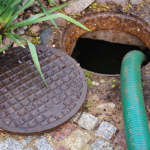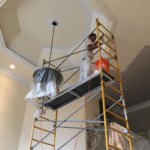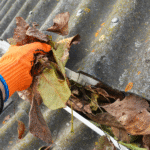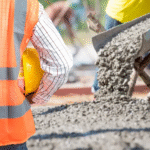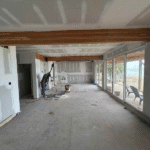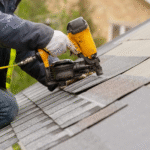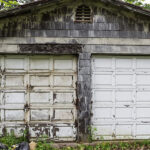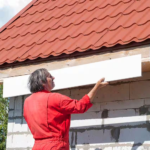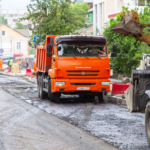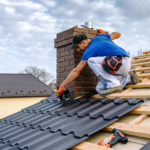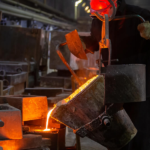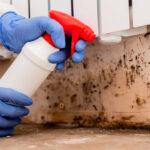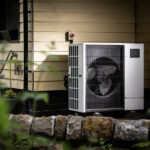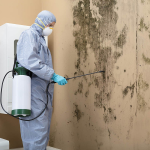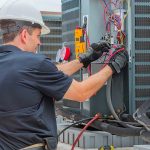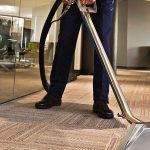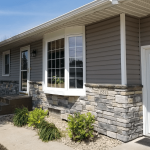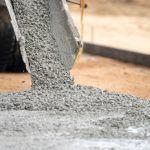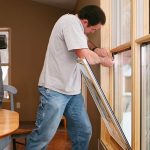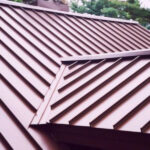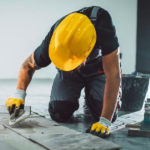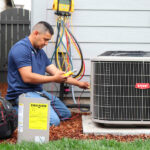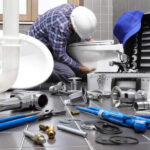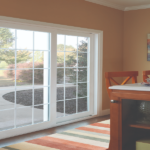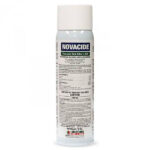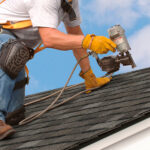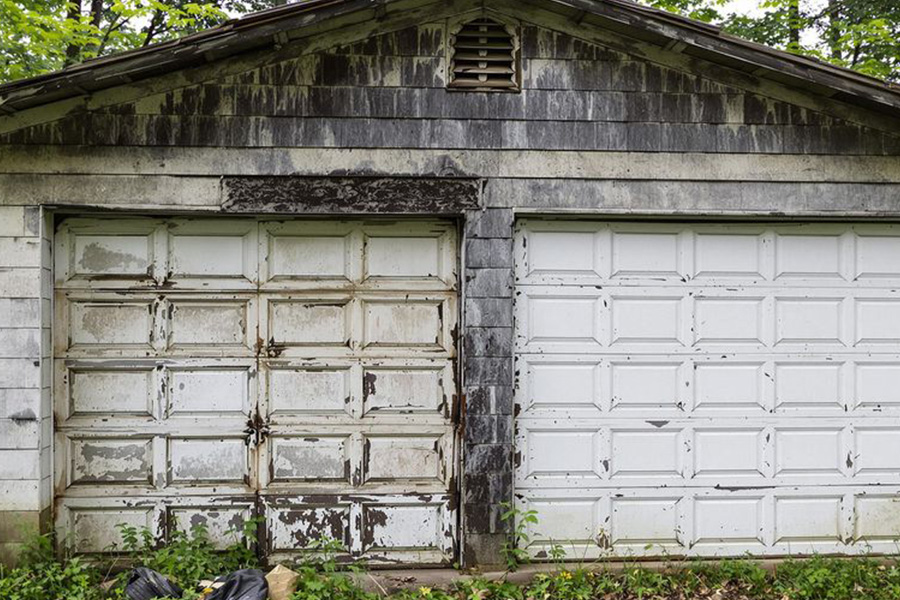
The Popularity of Asbestos in the 20th Century
During the 20th century, asbestos was one of the most sought-after materials in construction. Its fire-resistant properties, combined with its affordability and durability, made it an obvious choice for builders. Asbestos was widely used in various industries, from residential housing to public infrastructure. In particular, garages benefitted from its lightweight and weather-resistant qualities, which allowed for long-lasting structures that could endure harsh climates. However, as its health risks became evident, the enthusiasm for asbestos began to wane, leading to its eventual ban in many countries.
Common Uses of Asbestos in Garages
Asbestos found its way into several parts of garage construction. Some of the most common applications included:
- Roofing: Corrugated asbestos sheets were a popular choice for garage roofs due to their strength and ability to withstand the elements.
- Wall Panels: Asbestos cement boards were often used for internal and external walls, providing insulation and durability.
- Flooring and Insulation: Certain garage floors and insulation materials also contained asbestos, enhancing resistance to heat and wear.
Although these uses were practical at the time, they now pose significant health risks if disturbed.
Why Asbestos Was Chosen for Garage Roofs
Garage roofs, in particular, were a prime application for asbestos. Builders favored the material for several reasons:
- Affordability: Asbestos was a cost-effective solution for homeowners and contractors.
- Durability: It could last for decades without significant maintenance.
- Resistance: Asbestos was resistant to fire, decay, and weather damage, making it ideal for outdoor structures.
Despite its advantages, the risks of asbestos exposure far outweigh its benefits, especially as the material ages and begins to deteriorate. This history underscores the importance of identifying and managing asbestos in older garages today.
Identifying Asbestos in Your Garage
Visual Clues to Look For
Recognizing asbestos in a garage can be tricky because it often looks like ordinary cement or construction material. However, there are some visual indicators you can check for:
- Surface Texture: Asbestos cement often has a wavy design or small dimples and craters.
- Coloring: Materials with asbestos may have a white-and-gray mix, making them stand out slightly from standard cement.
- Cracks and Aging: Roof panels with asbestos tend to show cracks rather than crumbling, which is more common in non-asbestos materials.
While these clues can help, it’s critical to remember that visual inspection alone isn’t foolproof.
The Role of Construction Year in Determining Asbestos Presence
The year your garage was built can provide significant hints. Garages constructed before the year 2000 are more likely to contain asbestos. If your property predates this, there’s a higher chance that asbestos-containing materials (ACMs) were used in the roof, walls, or other components.
Why Professional Testing is Essential
Even if you notice some of the visual signs or suspect asbestos based on the construction year, professional testing is the only way to confirm its presence. Licensed asbestos professionals use specialized equipment to take samples and analyze them in a controlled environment. This step is vital because disturbing asbestos unknowingly can release harmful fibers into the air.
If you’re unsure about the materials in your garage, don’t take risks. Contact a professional for an asbestos survey and testing. For further details on identifying asbestos in garage roofs and the steps to take, refer to this guide.
Health Risks Associated with Asbestos in Garages
How Asbestos Fibers Affect Health
When asbestos-containing materials are disturbed, tiny fibers can be released into the air. These fibers are incredibly small, often invisible to the naked eye, and can be easily inhaled. Once inside the lungs, they can lodge in the tissue and remain there for years, potentially causing damage over time. The danger lies in prolonged exposure, as the effects are cumulative. Even a small amount of asbestos exposure can pose risks, particularly if the material is damaged or deteriorating.
Common Diseases Linked to Asbestos Exposure
Exposure to asbestos is directly associated with several serious health conditions, including:
- Mesothelioma: A rare but aggressive cancer that affects the lining of the lungs, abdomen, or heart.
- Asbestosis: A chronic lung disease caused by scarring of lung tissue, leading to breathing difficulties.
- Lung Cancer: Long-term exposure can significantly increase the risk of developing lung cancer, especially in smokers.
Symptoms of these conditions, such as persistent coughing, shortness of breath, and chest pain, often do not appear until decades after exposure.
Why Damaged Asbestos is More Dangerous
Asbestos materials in good condition generally do not release fibers into the air. However, when these materials are broken, cut, or deteriorated, the risk increases significantly. Activities like drilling, sanding, or even moving items within a garage can disturb asbestos-containing materials (ACMs). Damaged ACMs are particularly hazardous because they are more likely to release fibers, which can remain airborne for extended periods and travel considerable distances. This makes professional handling and removal essential to minimize health risks.
Common Locations of Asbestos in Garages
Asbestos in Roofing Materials
One of the most frequent spots where asbestos shows up in garages is the roof. During the mid-20th century, asbestos cement was a popular choice for roofing because it was lightweight, durable, and resistant to heat and weather. These roofs were often made of corrugated sheets containing about 15% asbestos mixed with cement. While these materials are generally safe when intact, any damage or aging can release harmful fibers into the air. If you suspect asbestos in your garage roof, it’s crucial to avoid disturbing it.
Wall Panels and Internal Boarding
Asbestos wasn’t just limited to roofs. Many garages also used asbestos-containing materials (ACMs) in wall panels and internal boarding. These materials were chosen for their insulation and fire-resistant properties. Over time, however, these panels can deteriorate, especially in older garages, posing health risks. Regular inspections can help identify any signs of wear or damage.
Gutters, Downpipes, and Other Cement Components
Another common location for asbestos is in the cement components of a garage, such as gutters and downpipes. These parts were often made from asbestos cement due to its durability and resistance to corrosion. Like other ACMs, these materials can become hazardous if they crack or degrade. If you’re planning any rehab facility upgrades or repairs, it’s essential to factor in the possibility of asbestos in these areas.
In general, asbestos materials in good condition don’t pose immediate risks. However, damaged or disturbed ACMs can release fibers, making professional assessment and management vital for safety. For more information on asbestos in garages, including its presence in cement flooring and insulation, refer to asbestos locations.
Steps to Take If You Suspect Asbestos in Your Garage
Avoiding Disturbance of Suspected Materials
If you suspect asbestos in your garage, the first rule is simple: do not disturb the material. Asbestos fibers become dangerous when released into the air, so avoid touching, cutting, or breaking any suspected components. This includes refraining from sweeping or vacuuming dust in areas where asbestos may be present, as this can further spread fibers. Even opening and closing garage doors too quickly can create air pressure changes that might disturb asbestos fibers, so proceed cautiously.
Contacting Licensed Asbestos Professionals
The next step is to get in touch with a licensed asbestos professional. These experts can assess the situation and determine whether asbestos is actually present. Look for certified contractors who have experience handling asbestos-containing materials (ACMs). They will follow strict safety protocols to ensure the health risks are minimized. For example, if your garage roof is suspected to contain asbestos, contacting a professional for safe removal is a critical measure to protect yourself and others.
The Importance of Asbestos Surveys
An asbestos survey is crucial for identifying and understanding the extent of asbestos in your garage. These surveys are performed by trained professionals who can safely collect samples and have them analyzed in a lab. There are different types of surveys, such as management surveys for ongoing use and refurbishment surveys for planned renovations or removals. Knowing the type of asbestos and its condition will help you decide the best course of action. In many cases, professionals may recommend encapsulation or removal based on the survey results.
Taking these steps ensures that you address the issue responsibly and avoid unnecessary exposure to asbestos. Whether you’re dealing with roofing materials, wall panels, or other garage components, proper handling and professional guidance are key to maintaining safety and peace of mind. Organizations like Serenity at Summit often emphasize the importance of addressing health risks proactively, and this is no exception when it comes to asbestos.
Options for Managing Asbestos in Your Garage
Encapsulation vs. Removal
When dealing with asbestos in a garage, property owners often face two main options: encapsulation or removal. Encapsulation involves sealing the asbestos-containing materials to prevent the release of harmful fibers. This is a practical choice when the asbestos is in good condition and unlikely to be disturbed. On the other hand, removal is usually recommended if the material is damaged or poses an immediate risk. This process requires the expertise of licensed professionals to ensure safety during the removal and disposal phases.
When to Leave Asbestos Materials in Place
In some cases, asbestos-containing materials can remain undisturbed if they are stable and not deteriorating. An asbestos management plan is essential in such scenarios. This plan includes regular inspections to monitor the condition of the materials and ensures that any risks are minimized. Leaving asbestos in place can be a cost-effective option, but it requires ongoing vigilance to ensure it does not become a health hazard.
Legal Requirements for Asbestos Management
Managing asbestos is not just a matter of safety; it’s also a legal obligation. Regulations, such as those outlined in the NESHAP guidelines, mandate proper handling and disposal of asbestos to protect public health. Property owners must also adhere to local laws, which may require professional surveys and documentation. Failure to comply with these regulations can result in severe penalties, emphasizing the importance of responsible asbestos management.
The Process of Asbestos Removal from Garages
Hiring Licensed Contractors
Removing asbestos from a garage is not a task to take lightly. Professionals with proper licensing and training should always handle this process. Licensed contractors are equipped with the necessary tools, protective gear, and expertise to ensure the removal is done safely and in compliance with regulations. Attempting to do it yourself can lead to accidental exposure to asbestos fibers, which pose serious health risks. When selecting a contractor, verify their credentials and check for reviews or references to ensure reliability.
Safety Measures During Removal
Safety is a top priority during asbestos removal. Contractors follow strict protocols to minimize the release of asbestos fibers into the air. These measures include:
- Sealing off the work area to prevent contamination.
- Using specialized vacuum systems with HEPA filters to clean up debris.
- Wearing protective gear such as respirators, gloves, and disposable suits.
Additionally, contractors may advise property owners to stay away from the site until the process is complete to avoid any potential exposure.
Disposal of Asbestos Materials
Proper disposal of asbestos materials is just as important as the removal itself. Asbestos waste must be sealed in approved containers and labeled clearly before being transported to designated disposal facilities. Licensed contractors are familiar with these requirements and will handle the process responsibly. Attempting to discard asbestos materials improperly can result in legal penalties and environmental hazards. By working with professionals, homeowners can rest assured that their garage rehab will be both safe and compliant with regulations.
Costs Involved in Asbestos Garage Removal
Factors Affecting Removal Costs
The cost of removing asbestos from a garage can vary widely depending on several factors. These include the size of the garage, the type and condition of the asbestos materials, and how accessible the area is. For example, a small garage with an asbestos cement roof may cost significantly less to address than a larger structure with asbestos in multiple locations. The complexity of the removal process is another key factor that can drive up costs.
Additional elements that influence expenses include:
- The need for specialized equipment and safety measures.
- Whether only the roof or the entire garage requires abatement.
- Disposal fees for hazardous materials.
Getting Accurate Quotes from Professionals
Hiring licensed asbestos removal contractors is essential for accurate cost estimates. Professionals assess the extent of the asbestos contamination and provide detailed quotes. To ensure a fair price, it’s recommended to get multiple quotes and compare services offered. Keep in mind that some contractors may include additional services like post-removal cleaning or air quality monitoring in their pricing.
Why DIY Removal is Not Recommended
Attempting to remove asbestos yourself is not only illegal in many areas but also extremely dangerous. Without proper training and equipment, you risk exposing yourself and others to harmful asbestos fibers. Moreover, improper handling can lead to contamination of the surrounding environment, resulting in even higher cleanup costs. Always rely on licensed professionals to handle asbestos abatement safely and effectively.
Legal and Regulatory Aspects of Asbestos in Garages
Understanding Asbestos Bans and Regulations
Asbestos regulations have evolved significantly over the years due to the material’s well-documented health risks. In the United States, the Environmental Protection Agency (EPA) and other federal agencies have implemented strict laws to control asbestos use and handling. One key regulation is the ban on specific asbestos-containing products, which aims to minimize exposure and protect public health. Property owners should familiarize themselves with these rules to ensure compliance and avoid penalties. For a detailed listing of these laws, refer to the comprehensive listing of laws and regulations related to asbestos.
Your Responsibilities as a Property Owner
If your garage contains asbestos, you have a legal obligation to manage it responsibly. This includes ensuring that the material is not disturbed or damaged, as this could release harmful fibers into the air. Property owners are also required to disclose the presence of asbestos during property sales or renovations. Hiring licensed professionals for inspections and removal is not just a safety measure—it’s often a legal requirement. Ignoring these responsibilities could lead to serious legal consequences.
Penalties for Improper Asbestos Handling
Failing to comply with asbestos regulations can result in hefty fines and other penalties. For example, mishandling or improper disposal of asbestos materials is considered a serious violation. Authorities may impose fines ranging from thousands to even tens of thousands of dollars, depending on the severity of the infraction. In some cases, criminal charges may also be filed. Adhering to legal guidelines is not just about avoiding penalties; it’s about protecting the health and safety of everyone involved.
Preventing Asbestos Exposure in Shared Spaces
Risks from Neighboring Properties
When a neighbor’s property contains asbestos, it can pose a risk to surrounding homes. Asbestos fibers, once airborne, can easily travel through open windows, doors, or even outdoor spaces. Repeated exposure to these fibers is dangerous and can lead to severe health issues. If you suspect your neighbor’s garage or other structures contain asbestos, it’s important to stay cautious. Open communication is key—your neighbor might not even be aware of the potential hazard.
How to Address Concerns with Neighbors
Bringing up the topic of asbestos with a neighbor can feel awkward, but it’s necessary for everyone’s safety. Here’s how you can approach it:
- Share information about the risks of asbestos exposure, including its link to diseases like mesothelioma.
- Suggest professional testing if there’s uncertainty about asbestos presence.
- Offer to discuss solutions together, such as encapsulation or removal, with licensed professionals.
Building a collaborative relationship can make it easier to address shared concerns and take appropriate action.
Monitoring Air Quality Around Asbestos Materials
Even if asbestos-containing materials (ACMs) are intact, monitoring the air quality around them is a smart safety measure. Consider these steps:
- Use HEPA air purifiers in shared spaces to capture airborne particles.
- Schedule regular air quality tests, especially if you suspect deterioration of ACMs.
- Limit activities near the suspected asbestos area to reduce the risk of fiber disturbance.
By taking proactive measures, you can minimize exposure risks and create a safer environment for everyone. For more tips on avoiding asbestos exposure, consider utilizing protective gear at home and work to safeguard yourself and your family.
The Importance of Regular Garage Inspections
Signs of Material Deterioration
Over time, materials in your garage—especially those containing asbestos—can start to break down. Cracks, breaks, or even small dimples in roofing or wall panels might indicate aging asbestos-containing materials (ACMs). These signs shouldn’t be overlooked. Damaged asbestos is much more likely to release harmful fibers into the air, posing a significant health risk. Regularly inspecting for these changes can help you address issues before they worsen.
When to Schedule Professional Inspections
While periodic self-inspections are helpful, they are no substitute for professional evaluations. Licensed asbestos surveyors can identify potential hazards that might go unnoticed by an untrained eye. Property owners are legally required to conduct licensed asbestos surveys before any construction, renovation, or demolition work. Scheduling professional inspections every few years—or sooner if you notice suspicious damage—ensures your garage remains safe for use.
Long-Term Benefits of Regular Maintenance
Routine inspections and maintenance offer several benefits. Firstly, they help to protect your health by minimizing exposure to dangerous asbestos fibers. Secondly, they preserve the structural integrity of your garage, extending its lifespan. Finally, staying proactive can save you money in the long run by addressing minor issues early, avoiding costly repairs or removals. Evoke Wellness in your living space by prioritizing safety and peace of mind through consistent garage checks.
Additional Links
Robert King Mesothelioma Law Services



